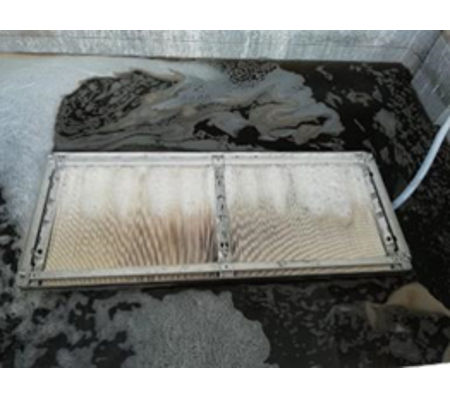“SUFRO®” technology successfully treats bio-pharmaceutical effluent
Background
A world leader in industrial enzymes and microorganisms needed a cost-effective, reliable, and efficient wastewater treatment plant for its new production and supply chain facility near Mumbai, India.
Challenge
Typical wastewater treatment facilities comprise biological treatment followed by pressurised ultrafiltration (UF) systems and a reverse osmosis (RO) plant. Based on its wide experience, A.T.E. HUBER Envirotech (AHET) identified the following pain areas associated with pressurised UF systems as mentioned below:
- The upstream biological system is virtually unprotected from loss of bio-mass
- Limitation in handling high suspended solids and COD
- Requirement of extensive pre-treatment for UF system
- Requirement of a large volume of backwash water
- High hydraulic load on ETP since backwash water goes back to equalisation tank and also needs to be treated in the plant itself.
- High chemical consumption
- Large footprint
A more efficient, reliable, sustainable, and cost-effective solution to address these pain areas at a justifiable capex and opex was the challenge posed to AHET.
Solutions
AHET worked closely with the company to ensure that these challenges were met with a sustainable and cost-effective solution. After exhaustive discussions with the management and their team, AHET proposed their biological treatment system with SUFRO® technology. The SUFRO® system comprises a Biomem HUBER membrane filtration, a high quality, submerged ultrafiltration membrane laminates with 38 nm pore size instead of the conventional pressurised UF system, followed by a reverse osmosis plant. This technology promised huge benefits in terms of savings in chemicals, balance of equipment, backwash water requirements, and space, so conceptually won immediate acceptance and approval from the management.
Result
A 200 KLD biological wastewater treatment and recycling plant based on the SUFRO® technology was designed, installed, and commissioned by AHET.
Compared with pressurised UF systems, SUF sustained higher suspended solids owing to its construction and operation. It has eliminated the use of pressure sand filter (PSF), activated carbon filter (ACF), and basket filter, otherwise required for conventional UF. The biomass in the clarifier overflow is effectively retained in the SUF tank, transferred back to the aeration tank, thus preventing biomass washouts. Overall hydraulic load on the wastewater treatment plant reduced as the backwash stream is not directed to the equalization tank. A lesser amount of chemicals and water are used in the chemically enhanced backwash cycle resulting in savings in chemicals and permeate water consumption. Ease of operation of SUF, smaller footprint, and superior treated effluent quality are other major advantages realised. The SUF permeate fed directly to a 3-stage RO system without the need for any additional pre-treatment.
Their requirement of a more efficient, reliable, sustainable, and cost-effective solution with low capex and opex requirements was thus successfully fulfilled with the installation of the SUFRO® based wastewater treatment plant. Additionally, the pain areas associated with the conventional systems were also addressed successfully.
To know more, please check ATE Huber.

